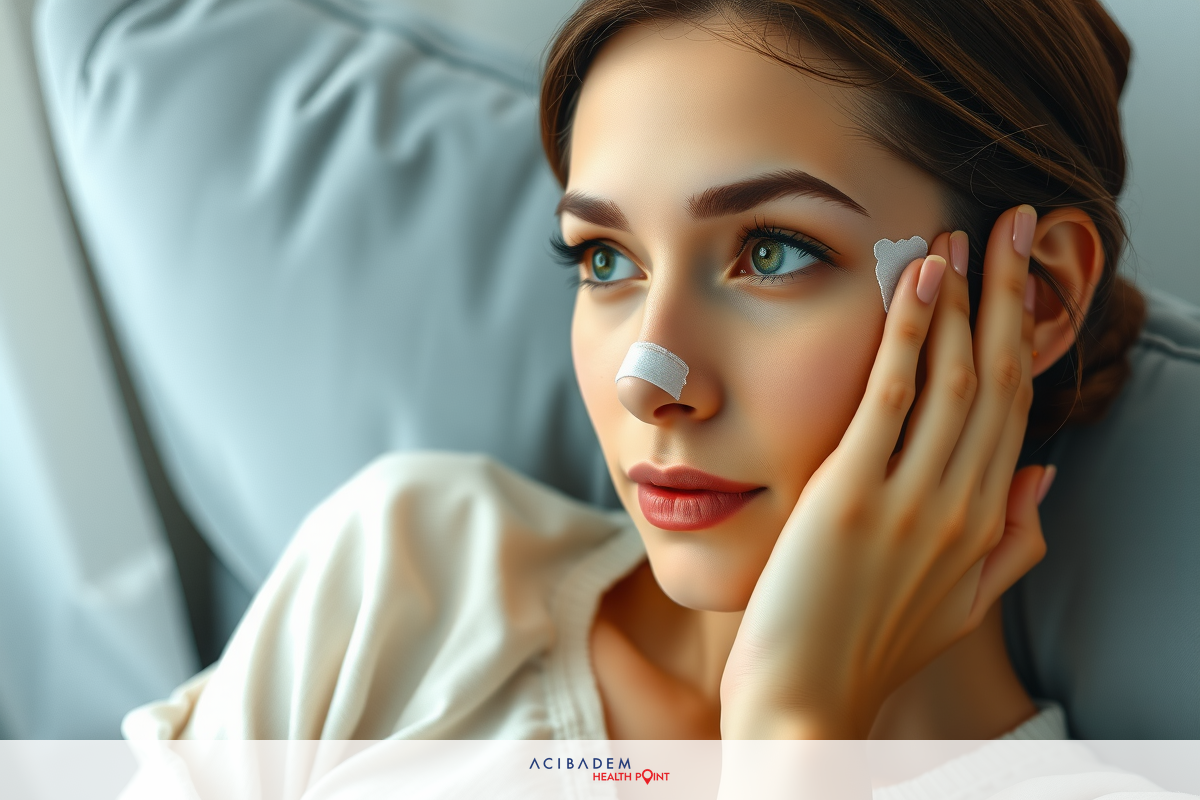Is My Nose Still Swollen After Rhinoplasty?
Is My Nose Still Swollen After Rhinoplasty? The recovery phase following rhinoplasty, often called a ‘nose job,’ is marked by swelling as the nose heals from the alterations made during surgery. This swelling—a normal response to trauma—can cause anxiety and concern for many patients who eagerly anticipate their new appearance.
Understanding why this swelling occurs can alleviate some of that worry. As part of your body’s natural healing process, it sends extra blood and fluids to the area operated on—your nose in this case—to aid in repairing tissues and fight off potential infections. While this influx causes an increase in size or puffiness, rest assured that it is temporary.
Managing expectations about your recovery timeline helps with post-rhinoplasty patience. The duration of swelling varies among individuals based on factors like age, health status, surgical specifics, and personal healing rate. Most people notice improvements within weeks while complete resolution might take up to a year—or occasionally longer—for subtle refinements as internal structures settle into their improved form.
Understanding Nose Swelling After Rhinoplasty
Rhinoplasty, or nose reshaping surgery, is a procedure that often leads to significant post-operative swelling. This reaction is normal and expected after any surgical intervention—especially one as intricate as rhinoplasty. The trauma experienced by the tissues during surgery triggers an automatic response from your body. It rushes blood and immune cells to the affected area—a process known as inflammation—to facilitate healing.
This inflammation results in noticeable swelling of your nose, which might be disconcerting at first glance but should not cause alarm. Given that the skin on your nose is tightly adhered to underlying bone and cartilage structures, any alteration—even microscopic—in these support structures will manifest externally as swollen tissue until it recovers its original form—or rather its new form—as decided by you and your surgeon during pre-surgical consultation.
The primary aim of this initial phase of recovery is wound healing—not aesthetics—and may take several weeks for visible improvement depending on individual factors like age, overall health condition, exact procedures performed (open versus closed rhinoplasty), skill level of the surgeon performing them among others. Also noteworthy here are personal habits such as smoking or alcohol consumption both of which can negatively impact wound healing leading to prolonged swelling duration.
However complex this might sound though—the human body’s ability to repair itself post-trauma—is truly remarkable; rest assured knowing that all these processes working together serve a single purpose: restoring you back into shape albeit with a better-shaped nose! Indeed patience yields virtue when recovering from rhinoplasty where seeing final results could even extend up to a year or more considering subtle refinements happen over time while internal nasal structures settle down completely into their improved configuration.
And so we find ourselves realizing how intertwined our understanding becomes when dissecting ‘nose swelling’ after rhinoplasty: it embodies not just physical changes influencing aesthetic outcomes but also involves emotional elements relating to patient expectations, worries about recovery timelines and satisfaction with final results. As you navigate through your very own unique healing journey postrhinoplasty—remember that swelling is temporary while the joy of an aesthetically pleasing nose lasts a lifetime!
Duration of Nose Swelling
The duration of nose swelling following rhinoplasty is a topic that holds much interest for patients. After all, the transition period between surgery and final results represents a time of change—both physical and emotional—that requires patience and understanding. The timeline varies significantly among individuals due to factors like

surgical technique used, individual healing capacity, overall health status, lifestyle habits such as smoking or alcohol consumption.
In most cases though, you can expect your nose to remain swollen for several weeks post-surgery with visible improvements starting around the one-month mark. However, don’t be startled if your new nasal contour isn’t immediately apparent at this stage; internal structures are still settling down while residual inflammation continues to taper off gradually over months—even years in some instances—in what’s known as secondary healing phase where subtle refinements occur slowly but steadily.
With proper care and adherence to surgeon’s guidelines though—you’ll soon see light at end of tunnel—watching daily transformations albeit small occurring right before eyes until one day you wake up realizing your nose has indeed healed! It has reached its intended shape—an exciting moment filled with joy and satisfaction—making all those months of waiting totally worth it! So hang in there, stay positive and remember: good things come to those who wait.
Managing Nose Swelling
While the duration of swelling post-rhinoplasty is largely subject to individual healing factors and surgical specifics, certain measures can be adopted to aid in reducing inflammation. Proper care and adherence to your surgeon’s instructions will significantly contribute towards a smoother recovery journey. The following tips are aimed at managing nose swelling effectively.
- Elevation: Keeping your head elevated above heart level—even while sleeping—can help reduce blood flow hence decrease swelling.
- Cold compresses: Applying cold packs around—not on—the swollen area during the initial 48 hours can soothe discomfort besides reducing inflammation.
- Hydration and nutrition: Drinking plenty of fluids along with consuming nutrient-rich foods aids overall body healing including reduction of nasal edema.
- Avoid strenuous activities: High-intensity exercises or any activity that increases blood pressure should be avoided as they might exacerbate swelling.
- No touching or rubbing your nose: Unnecessary manipulation could potentially disturb delicate healing tissues leading to increased inflammation.
Therefore, while it might appear daunting initially dealing with nose swelling after rhinoplasty—stay rest assured knowing that these effective strategies when combined with time-tested power of patience—will yield desired results eventually: a well-shaped nose adding harmony and balance to facial aesthetics thereby boosting confidence levels immensely!
Frequently Asked Questions
How long does swelling typically last after rhinoplasty?
Swelling duration varies significantly among individuals based on factors like surgical technique, individual healing capacity, health status and lifestyle habits. Most people notice improvements within weeks but complete resolution might take up to a year or longer for subtle changes as internal structures settle into their improved form.
Can I do anything to reduce nose swelling post-rhinoplasty?
Yes, certain measures can help manage swelling effectively. These include keeping your head elevated above heart level, applying cold compresses around the swollen area during the initial 48 hours post-surgery, maintaining good hydration and nutrition levels besides avoiding strenuous activities or unnecessary manipulation of your nose.
When will my new nasal contour become evident after rhinoplasty?
While you may start noticing visible changes around one-month mark post- surgery—the final aesthetic outcome could take up to a year or more as slow yet steady refinements occur with time leading to scar maturation ultimately revealing your new improved nasal shape.
Is it normal for my nose to look asymmetrical due to uneven swelling following rhinoplasty?
Yes, it's quite common experiencing uneven inflammation initially which might give an appearance of asymmetry. However this should resolve over time as healing progresses leading towards symmetry in facial aesthetics.











